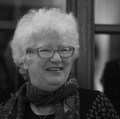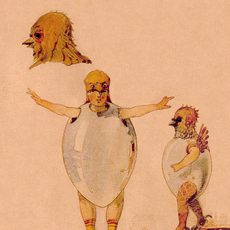
News Story
At the 2025 International Festival, we have commissioned a series of expert essays to help you Dive Deeper into your Festival experience.
The programme note by Elizabeth Wilson explores the truths in Shostakovich's compositions and the suppression of artistic expression under Stalin.

Written by Elizabeth Wilson
Elizabeth Wilson worked as a professional musician before starting to write. Her first book Shostakovich a Life Remembered published in 1994, was followed by biographies of Jacqueline du Pré, Mstislav Rostropovich, and Maria Yudina. Currently she is working on a biography of Daniel Barenboim.
Truth Between the Lines
This dictum attributed to Pablo Picasso “Art is a lie that leads to the Truth” is particularly relevant to the context of Shostakovich’s life. Yet first we must ask- can Art express the Truth, or for that matter a lie? Shostakovich’s music seems to epitomise honesty of endeavour. Certainly, the composer was acutely aware of the necessity of moral honesty. Yet his music was judged in the Soviet Union as to whether it upheld socialist principles. As the Russian musicologist, Henry Orlov stated, “Those born and brought up in a free society can hardly comprehend what it takes to remain honest in a Police State.”
The Russian word vranyò loosely translated as “lies or tall stories”; it epitomises knowing deceit, whether in the outrageous claims of propaganda or in a drunkard’s mendacity. Vranyò was something well known to Shostakovich, who loved exaggerated stories, but was horrified when informers used it to bring down their enemies. He despised the deceit that coloured any dealings with authority and learnt to exclude it by evasion.
Art is a lie that leads to the TruthPablo Picasso
Shostakovich was fascinated by Shakespeare’s Hamlet, because the play represented for him the dilemma of remaining honest in a political Dictatorship. He wrote music to two stage productions and created the score for Grigori Kozintsev’s film of 1964. Surely Shostakovich’s personal motto echoes Polonius’s words of advice to his son, Laertes:
“This above all- To thine own self be true,
And as it must follow, as the Night the Day,
Thou canst not then be false to any man.”
Stalin's Dictatorship
The truth could only be dimly discerned in the years of Stalin’s ruthless dictatorship, and it required strong moral fibre not to be “false to any man.” Undoubtedly Shostakovich was true to himself in his serious music, whereas he made no bones about hiding his disgust for work produced for official commissions and against his own principles.
In the 1920s when Shostakovich was forging his career, his attitude to the emerging new Soviet state was ambivalent. His experimental avant-garde style seemed to him ideologically appropriate to depict the themes of October in his Second Symphony (1927) and May-Day in his Third Symphony (1929). Furthermore, his three ballets, created between 1929 and 1934, all embrace topical social issues – a Soviet football team emerging victorious against devious capitalist rivals, sabotage in industry, and the joys of collectivisation. His brilliant scores used heavy sarcasm and pointed irony, designed to appeal to popular taste. His bow to “ideology” in these scores earned him the right to set grotesque 19th-century stories as subjects on his two operas. He even justified the idea of a lustful murderess as the heroine of Lady Macbeth of Mtsensk (1930-32), claiming sympathy for the plight of women in Tsarist Russia. The antiheroes were men from the retrograde merchant class who mercilessly used violence to humiliate women.
Shostakovich's Subversion
It was in these years that Shostakovich developed the skills of musical subversion, using ridicule for instance through extreme contrasts of orchestration. However, things changed after 1932, when the Communist Party became the single arbiter of Culture, instructing artists through imposing the dogma of Socialist Realism. In January 1936 Shostakovich learnt this to his cost: Stalin attended a performance of Lady Macbeth in Moscow and reacted violently against it. His views were echoed in an editorial article “Muddle Instead of Music” that appeared in Pravda. Here Shostakovich was subjected to criticism in terms that threatened his very existence.
Those born and brought up in a free society can hardly comprehend what it takes to remain honest in a Police State.Russian musicologist, Henry Orlov
Honest to himself, the composer completed his mammoth Fourth Symphony. In the current political climate, he must have known it was unperformable- it would have been perceived as formalist monstrosity - the antithesis of socialist realism. He incautiously released it for performance in December 1936 but immediately withdrew it from rehearsal. It was only performed a quarter of a century later.
The Fifth Symphony
Shostakovich’s survival depended on the favourable reception of his next work, his Fifth Symphony. He conceived it as tonal, classical in style and with a triumphant ending, representing optimistic young communists marching to a bright Future. Yet he created a masterpiece, which could be taken at face value, but which also held many layers of meaning. At the time nobody would have perceived arcane allusions to his setting of a Pushkin poem. It talks of barbarians rudely slapping paint over an original image, while hoping that in future years it would be uncovered and revealed. Only one critic recognised the citation of the Habenara’s refrain ‘l’Amour’ from Georges Bizet’s Carmen in the opening movement’s second subject. It appears again at the start of the finale’s coda. Only long after the composer’s death was the riddle explained; Shostakovich had had a girlfriend who had recently married the documentary film-maker Roman K(C)armen. It was also a love song to her.
The symphony’s reception was favourable: Alexei Tolstoy saw Hamlet-like musings leading to the formation of a positive personality. More critical, the musicologist, Ryzhkin deemed that “Prince Hamlet of the Mtsensk District” would be a suitable subtitle reflecting the hero’s provincial inconsequence. A journalist applied another subtitle “an Artist’s Reply to Just Criticism.” Shostakovich let it remain- it justified his rehabilitation,
From then on quotation and allusion became part of the composer's vocabulary. He had found a way to be truthful for those who “had ears to listen.”
© Elizabeth Wilson, 2025
Experience it Live
Hear the Aurora Orchestra perform Shostakovich’s Fifth Symphony from memory on Mon 18 Aug 2025, 7.30pm.
Get to know the work in greater detail with Shostakovich Inside Out on Mon 18 Aug 2025, 2.00pm. Founder-conductor Nicholas Collon and Aurora Orchestra explore the piece through a conversational presentation, pausing to share insights and delve into its emotional depth and historical context.



